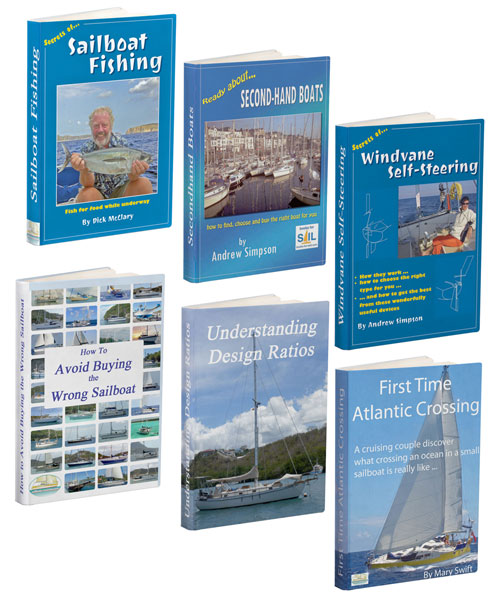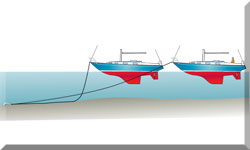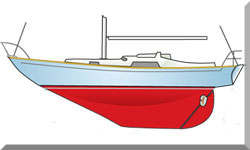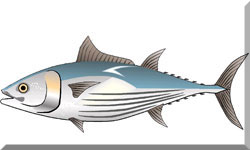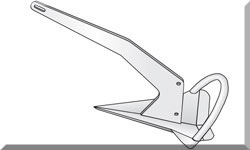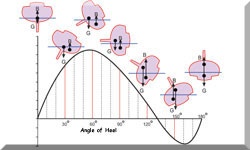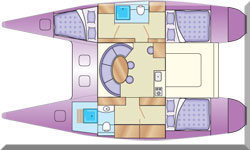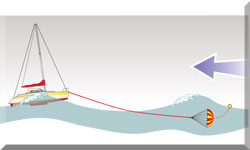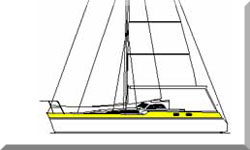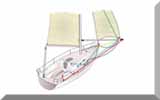- Home
- Cruiser Yachts under 30'
- Shannon 28
The Shannon 28 Sailboat
Specs & Key Performance Indicators
The Shannon 28, a heavy displacement cutter, was designed by Walter Shultz and built in the USA by Shannon Boat Company.
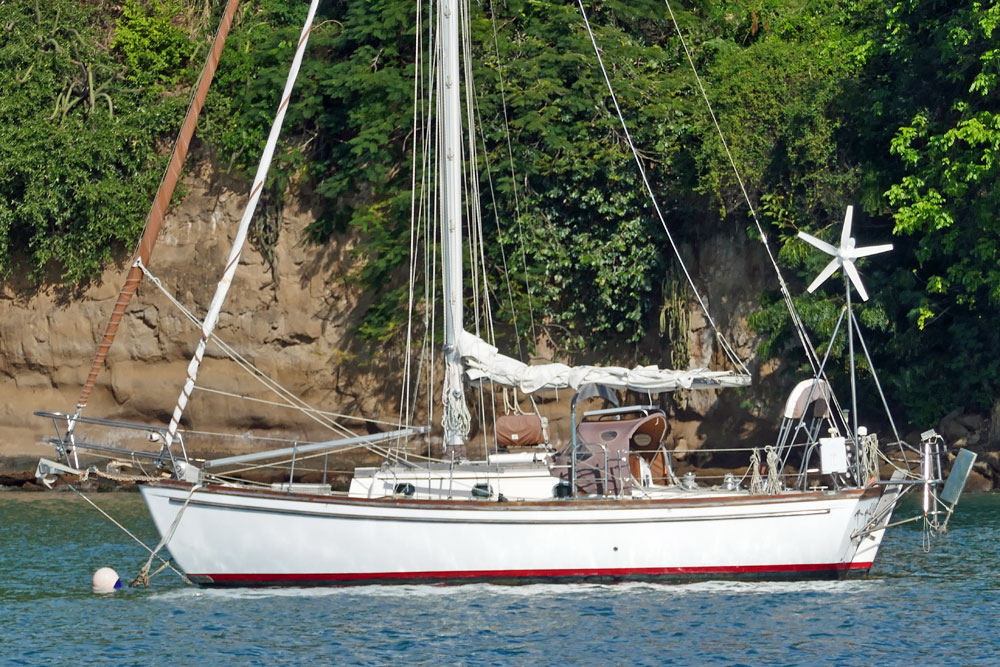 A Shannon 28
A Shannon 28Published Specification for the Shannon 28
Underwater Profile: Fin keel with transom-hung rudder
Hull Material: GRP (Fibreglass)
Length Overall: 28'0" (8.5m)
Waterline Length: 22'11" (7.0m)
Beam: 9'6" (2.9m)
Draft: 4'3" (1.3m)
Rig Type: Cutter
Displacement: 9,300lb (4,218kg)
Designer: Walter Shultz
Builder: Shannon Boat Company (USA)
Year First Built: 1978
Year Last Built: 1985
Number Built: 50
Published Design Ratios for the Shannon 28
1. Sail Area/Displacement Ratio: 16.1
2. Ballast/Displacement Ratio: 38.7
3. Displacement/Length Ratio: 345
4. Comfort Ratio: 27.7
5. Capsize Screening Formula: 1.8
Performance Predictions, Based on the Design Ratios
Some of the design ratios that can help us predict the performance of the Shannon 28 are:
- Hull Speed: 6.4 knots. This is the theoretical maximum speed that a displacement hull can achieve, based on its waterline length. The Shannon 28 has a waterline length of 7 meters, which gives it a hull speed of 6.4 knots. This is a decent speed for a cruising boat of this size.
- Sail Area/Displacement: 16.1. This ratio measures the power of the sails relative to the weight of the boat. A higher ratio indicates better performance in light winds, while a lower ratio indicates better performance in heavy winds. The Shannon 28 has a sail area of 41.3 square meters and a displacement of 4,218 kilograms, which gives it a ratio of 16.1. This is a moderate ratio that suggests the boat can sail well in both light and heavy winds.
- Ballast/Displacement: 38.7%. This ratio measures the stability of the boat, based on the weight of the ballast relative to the weight of the boat. A higher ratio indicates more stability and stiffness, while a lower ratio indicates less stability and more tenderness. The Shannon 28 has a ballast of 1,633 kilograms and a displacement of 4,218 kilograms, which gives it a ratio of 38.7%. This is a high ratio that indicates the boat is very stable and can resist heeling in strong winds.
- Displacement/Length: 345. This ratio measures the heaviness of the boat, based on its weight relative to its waterline length. A higher ratio indicates a heavier and more comfortable boat, while a lower ratio indicates a lighter and more agile boat. The Shannon 28 has a displacement of 4,218 kilograms and a waterline length of 7 meters, which gives it a ratio of 344.2. This is a high ratio that indicates the boat is heavy and comfortable for cruising.
- Comfort Ratio: 27.7. This ratio measures the comfort of the boat at sea, based on its motion characteristics. A higher ratio indicates more comfort and less motion sickness, while a lower ratio indicates less comfort and more motion sickness. The Shannon 28 has a comfort ratio of 27.7, which falls within the range of 20-30 for coastal cruisers.
- Capsize Screening: 1.8. This ratio measures the safety of the boat in case of capsize, based on its beam and displacement. A lower ratio indicates better safety and less likelihood of capsize, while a higher ratio indicates less safety and more likelihood of capsize. The Shannon 28 has a capsize screening of 1.8, which is below the threshold of 2 for ocean passages.
Based on these ratios, we can conclude that the Shannon 28 is a well-designed boat that offers good performance, stability, comfort, and safety for cruising.
Production Period and Numbers Produced
The Shannon 28 was launched in 1978 by Shannon Yachts, a company founded by Walter Shultz in Rhode Island in 1975. The Shannon 28 was the second yacht to join the Shannon line-up, after the Shannon 38 offshore cruiser. The production of the Shannon 28 lasted until 1999, with less than 100 boats built. The Shannon Yachts company is still in operation today, producing custom-built boats ranging from 36 to 53 feet.
Alternative Versions & Options
The Shannon 28 was offered in two versions: the Shannon 28 Cutter and the Shannon 28 Sloop. The cutter version had a staysail on a self-tacking boom, while the sloop version had a larger genoa and no staysail. The cutter version was more popular, as it provided more versatility and balance in different wind conditions.
The Shannon 28 also had some options for the interior layout and the auxiliary power. The interior layout could be either a traditional layout with a V-berth forward, a head to port, a hanging locker to starboard, a U-shaped dinette to port, a galley to starboard, and a quarter berth aft; or a modified layout with a double berth forward, a head and a hanging locker to starboard, a straight settee to port, a U-shaped galley to starboard, and a quarter berth aft. The auxiliary power could be either a Yanmar 2GMF 15 HP diesel engine or a Westerbeke 21 HP diesel engine.
Number & Location of Sleeping Berths
The Shannon 28 can accommodate up to four people for sleeping. The sleeping berths are located in the forward cabin, the main cabin, and the aft cabin. The forward cabin has either a V-berth or a double berth, depending on the interior layout. The main cabin has either a U-shaped dinette that converts to a double berth or a straight settee that can be used as a single berth, depending on the interior layout. The aft cabin has a quarter berth that can be used as a single berth.
History of the Boatbuilder
Shannon Yachts is a boatbuilding company founded by Walter Shultz in Rhode Island in 1975. Shultz is described as one of the last of a wonderful breed, the complete boatbuilder – one who designs boats, invents rigs, iterates on hull shapes not only computer but also crafts the half models for testing and finally builds the real boat with his own hands. Shultz has been sailing since he was six years old and has accumulated over 100,000 miles of offshore experience. He has also been involved in various aspects of the marine industry, such as yacht brokerage, chartering, surveying, and teaching.
Shannon Yachts is known for producing high quality and seaworthy boats that are designed for offshore cruising and liveaboard capability.
The company's motto is "I'd like to have every boat I build outlive me" – Walter Shultz.
Some of the notable models produced by Shannon Yachts are:
- Shannon 38: The first yacht launched by Shannon Yachts in 1975. A sweet sailing offshore cruiser that can accommodate up to six people. Over 100 boats built.
- Shannon 28: The second yacht launched by Shannon Yachts in 1978. A high quality and seaworthy cruiser that can accommodate up to four people. Less than 100 boats built.
- Shannon 43: A spacious and comfortable cruiser that can accommodate up to eight people. Launched in 1982. Over 50 boats built.
- Shannon Pilot 43: A pilothouse version of the Shannon 43 that offers more protection and visibility. Launched in 1996. Over 20 boats built.
- Shannon Voyager 36: A versatile and innovative cruiser that can be configured as a sloop, cutter, ketch, or schooner. Launched in 2000. Over 10 boats built.
- Shannon 39: A modern and elegant cruiser that combines performance and comfort. Launched in 2004. Over 10 boats built.
Shannon Yachts is still in operation today, producing custom-built boats ranging from 36 to 53 feet. The company also offers restoration and refit services for existing Shannon owners.
Secondhand Values
The Shannon 28 is a rare and sought-after boat on the secondhand market. The price of a used Shannon 28 depends on various factors, such as the year of production, the condition of the boat, the equipment and upgrades installed, and the location of the boat. According to YachtWorld, an online marketplace for boats, the average asking price for a used Shannon 28 in April 2023 was US$53,425, with prices ranging from US$24,900 to US$67,500. The number of listings available was four.
This article was written with the assistance of Gemini, a large language model developed by Google. Gemini was used to gather information, summarize research findings, and provide suggestions for the content and structure of the article.
Recent Articles
-
Hans Christian 43: Classic Bluewater Cruiser & Liveaboard Sailboat
Dec 10, 25 04:37 AM
Explore the Hans Christian 43: a legendary heavy-displacement, long-keel sailboat. Read our in-depth review of its specs, design ratios, and suitability for offshore cruising and living aboard. -
Planning Your Sailboat Liveaboard Lifestyle: An Ocean Sailor's Guide
Dec 06, 25 05:18 AM
Seasoned sailors share their methodical risk analysis for planning a secure Sailboat Liveaboard Lifestyle, covering financial, property, and relationship risks. -
Marine Cabin Heaters: The Expert’s Guide to Comfort & Safety at Sea
Dec 05, 25 06:52 AM
Choose the best Marine Cabin Heaters for your vessel. Expert advice on diesel, paraffin, and hot water systems for year-round cruising comfort.
